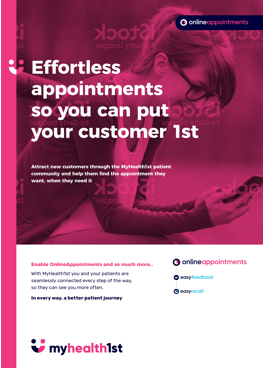
Before launching into any marketing strategy, it’s important to first define your marketing plan and what it is that you wish to achieve from it. This isn’t necessarily a simple process but it is one that will inform every step of your marketing plan, giving you invaluable information going forward.
Analysis
One of the key ways of gauging the strengths and weaknesses of a business and identifying areas that either need to be improved or avenues that can be exploited is to utilise what is referred to as SWOT analysis. SWOT stands for Strengths, Weaknesses, Opportunities and Threats, the first two looking inward at the business and the latter two analysing competitors and potential avenues for growth.
Each element of a SWOT analysis allows a business to identify its own advantages and disadvantages, helping them to improve their business as a whole and understand potential selling points or areas of difference from competitors. With this knowledge, forming a marketing strategy can be much more straightforward.
A Business Model Canvas is an easy to understand visual chart that represents a number of factors about a new or existing business, such as customers (or in the case of healthcare, patients), finances, infrastructure and value proposition. Much like SWOT analysis, a Business Canvas can provide invaluable insight as to avenues for future marketing potential and growth by identifying points of difference or unique strengths.
Setting Goals
One you have a firm grasp of the strengths and weaknesses of your practice and have identified potential avenues for marketing, the next step is to set goals for your marketing strategy. Simply saying “I want to grow my practice” or “I want more patients”, even if that is the ultimate goal, is not enough. You need to consider costs, reasonable and achievable outcomes and timeframes.
One excellent way of approaching goal setting is to use a SMART format.
S pecific - what is it you want to achieve; visits, advertising a new service or treatment, community engagement, etc.
M easurable - give yourself a number to work towards
A ttainable - ensure that your benchmarks are possible and reachable (number of new patients, click throughs, leads, etc)
R elevant - make sure that everything you do in your marketing relates back to the specific goal you have set yourself
T imely - give yourself a time frame in which you want to achieve your goals
Even if you don't adopt this exact format, setting yourself reasonable goals and a framework through which you wish to achieve them will keep you on track and help in targeting your marketing strategies.
Identify Your Market
Another step that should be considered before launching into an individual strategy is identifying the market you are targeting. Sometimes this is referred to as creating a buyer persona. An analysis of existing patients can help in developing this persona, looking at the location and age can sometimes be enough for a physiotherapy practice, but depending on the service or speciality being marketed, more granular information including symptoms or conditions, gender, interests and income may also prove to be important information for positioning your marketing strategy.
Are you ready to transform your Physiotherapy Practice? - click here
Marketing Strategies
There are many digital marketing strategies you can potentially adopt for your physiotherapy practice depending on the goals you wish to achieve from your campaign. Potential strategies include:
SEO (Search Engine Optimisation)
SEO is the process of improving your website using a combination of keyword analysis, improvements to speed and functionality as well as other factors so it is more easily found on Google. There are other search engines, sure, but Google dominates the search engine space with more than 92% of the market share globally, so ranking on Google is the metric by which SEO is measured.
Appearing within the first 10 results on Google for a specific search term related to your practice (such as “Physiotherapist in Camperdown”) nets the best results, with around 95% of all clickthrough Google traffic coming from the first page of search results. Even if your practice can’t rank on the first page, the closer you can get to the front of the list the more likely you are to be found by prospective patients.
PPC (Pay Per Click) Advertising
PPC is a model of Internet marketing that sees businesses paying a fee each time an ad is clicked. Google Ads (formerly Google AdWords) is probably the most popular form of PPC advertising. Users bid on keywords related to their business or product.
Every time a search is made using those keywords, Google looks at its pool of advertisers who have bid on that keyword or related keywords and chooses advertisers based on a combination of factors such as the CPC bid (the highest amount of money the advertiser is willing to spend on the keyword) and the Quality Score (a measure of the quality and relevance of keywords, the click through rate and quality of the landing page the ad directs to).
PPC advertising is essentially an auction in which advertisers bid on search terms, enabling them to target their advertising for a cost that fits within their budget.
Email Marketing
Email marketing is the act of using email to connect with your market or patients. While it may not be an effective way of growing your practice with new patients - unsolicited emails from a medical practise are highly unlikely to generate much more than antipathy - but when it comes to developing a relationship with existing patients or marketing new services, email can be an excellent tool.
Social Media Marketing
Depending on your target market, social media marketing can be an excellent way to target certain demographics to help increase engagements or attract new patients to your door. A social media marketing strategy can involve more than just social media advertising, but can extend to using social media to connect directly with existing and potential patients by pushing content on your website or simply answering questions. Depending on the market you are trying to reach, different social media platforms have their own benefits and disadvantages.
Facebook marketing and advertising can be a cost effective way of targeting a specific audience by location, gender, age, interest or more. This granularity in targeting allows practices to really hone in on their market. Both Facebook and AHPRA have strict rules about what can or can’t be posted or used as advertising, so a careful examination of the rules is necessary before launching into any Facebook marketing campaign.
Linkedin can also be a valuable tool for marketing your practice if you are looking to reach a certain demographic. Physiotherapists looking to market services for treating stress or ergonomics related workplace symptoms, or a sports physiotherapy practice specialising in sports with an older or wealthier demographic, such as golf, may want to consider LinkedIn as a marketing opportunity.
Knowing your market is key when it comes to choosing a social media platform for your marketing endeavours.
Content Marketing
Content marketing involves creating and publishing quality content (typically on a blog) then distributing it to a targeted market online. In essence, content marketing requires you to provide something of value for that value to be returned by the market. Content marketing is a long term strategy that requires consistency in both frequency of posting and quality.
Before developing content, it’s imperative that you discover what kind of content that your market is interested in. The more approachable and shareable you can make the content, the greater its reach and the potential reward. Keyword research, competitor analysis and identifying the strengths of your practice can help develop a content plan.
Results accrue over time rather than being immediately noticeable, but diligent posting and pushing of high quality content can lead to strong patient loyalty and a community that will associate your practice with the topics that you have focussed on with your content.
Depending on what is produced, content marketing can be used to generate interest or leads, increase brand awareness, engage with your community with interesting and relevant information and expand your patient base. If you’re looking for an example of content marketing, you’re reading some right now.
In our ongoing quest to help patients easily access the healthcare they need, and help podiatry practices better engage with patients, MyHealth1st is proud to announce that we now offer managed digital marketing for physiotherapy practices across Australia and New Zealand. Our expert marketing team can help you analyse your business to identify marketing avenues, help plan strategies and implement marketing campaigns to help your practice reach its goals.
